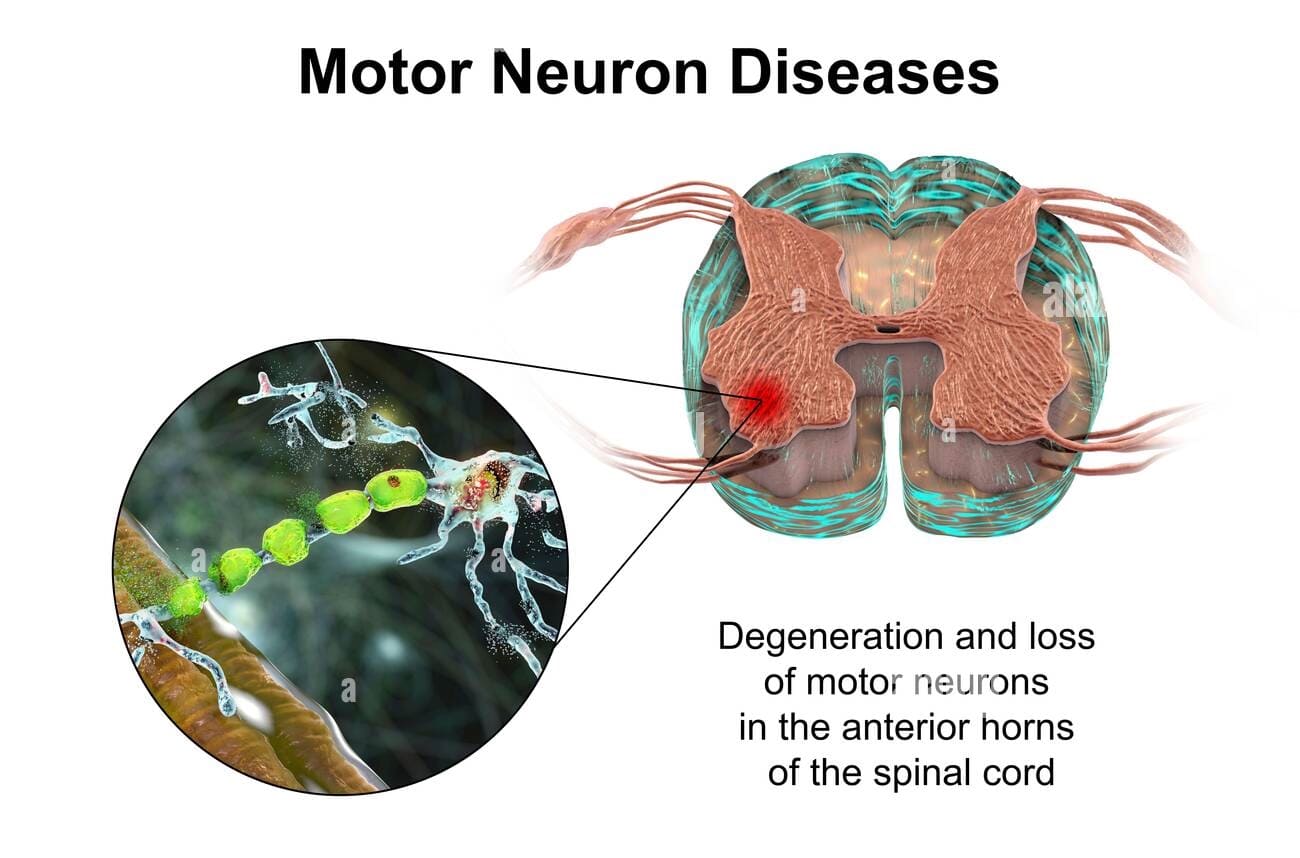Pathophysiology of Motor Neurone Disease

Motor neurone disease (MND) is a group of progressive neurological disorders that affect the motor neurons, the nerve cells that control voluntary muscle movement. There are several types of MND, each with its own specific characteristics and progression.
Types of Motor Neurone Disease
- Amyotrophic lateral sclerosis (ALS) is the most common type of MND, accounting for about 90% of cases. ALS affects both the upper and lower motor neurons, leading to progressive muscle weakness and paralysis.
- Progressive muscular atrophy (PMA) is a type of MND that primarily affects the lower motor neurons, leading to progressive muscle weakness and atrophy.
- Primary lateral sclerosis (PLS) is a type of MND that primarily affects the upper motor neurons, leading to progressive muscle stiffness and spasticity.
- Spinal muscular atrophy (SMA) is a type of MND that affects the motor neurons in the spinal cord, leading to progressive muscle weakness and atrophy.
Genetic and Environmental Factors
The exact cause of MND is unknown, but both genetic and environmental factors are thought to play a role. Genetic mutations in several genes have been linked to MND, including the SOD1, C9orf72, and TARDBP genes. Environmental factors that may increase the risk of MND include exposure to certain toxins, such as lead and mercury, and a history of head trauma.
Role of Neuroinflammation and Oxidative Stress
Neuroinflammation and oxidative stress are believed to play a role in the development and progression of MND. Neuroinflammation is a chronic inflammatory response in the nervous system that can damage motor neurons. Oxidative stress is a state of imbalance between the production of free radicals and the body’s ability to counteract their harmful effects. Free radicals can damage motor neurons and contribute to the development of MND.
Clinical Features and Diagnosis of Motor Neurone Disease

Motor neurone disease (MND) is a progressive neurological disorder that affects the motor neurones, which are nerve cells that control voluntary muscle movement. The typical clinical features of MND include muscle weakness, atrophy, and fasciculations.
Muscle Weakness
Muscle weakness is the most common symptom of MND. It typically begins in one limb or group of muscles and gradually spreads to other parts of the body. The weakness can range from mild to severe, and it can eventually lead to paralysis.
Muscle Atrophy
Muscle atrophy is the loss of muscle mass. It is a common symptom of MND, and it can occur as a result of muscle weakness. Muscle atrophy can make it difficult to perform everyday activities, such as walking, talking, and eating.
Fasciculations
Fasciculations are involuntary muscle twitches. They are a common symptom of MND, and they can be seen in the muscles of the arms, legs, face, and tongue. Fasciculations can be annoying, but they are not usually painful.
Diagnosis of MND
There is no single test that can definitively diagnose MND. However, a combination of tests can be used to confirm the diagnosis, including:
- Electromyography (EMG): An EMG measures the electrical activity of muscles. It can be used to detect muscle weakness and damage.
- Nerve conduction studies (NCS): NCS measure the speed and strength of electrical signals in nerves. They can be used to detect nerve damage.
- Magnetic resonance imaging (MRI): An MRI scan can be used to rule out other conditions that can cause similar symptoms to MND, such as a brain tumor or spinal cord injury.
Diagnosing MND can be challenging, particularly in the early stages. This is because the symptoms of MND can be similar to those of other conditions, such as multiple sclerosis and Parkinson’s disease. However, the combination of tests listed above can usually help to confirm the diagnosis.
Management and Treatment of Motor Neurone Disease

Currently, there is no cure for MND, but treatments are available to help manage the symptoms and improve quality of life. These include medications, physical therapy, and assistive devices.
Medications can help to slow the progression of the disease, relieve symptoms such as muscle cramps and pain, and improve sleep. Physical therapy can help to maintain muscle strength and range of motion, and assistive devices can help patients with activities of daily living.
Palliative Care
Palliative care is an important part of MND management. It focuses on providing comfort and support to patients and their families, and can help to improve quality of life.
Palliative care services can include pain management, symptom control, emotional support, and spiritual care.
Multidisciplinary Care, Motor neurone disease
MND is a complex disease that requires a multidisciplinary approach to care. This means that a team of healthcare professionals, including neurologists, physiatrists, nurses, social workers, and dietitians, work together to provide comprehensive care for patients.
A multidisciplinary team can help to ensure that all of the patient’s needs are met, and that they are receiving the best possible care.